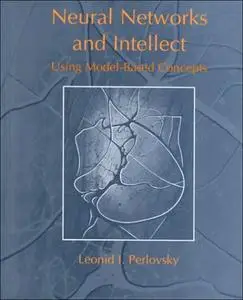Leonid I. Perlovsky, "Neural Networks and Intellect: Using Model-Based Concepts"
2000 | pages: 496 | ISBN: 0195111621 | DJVU | 1,9 mb
2000 | pages: 496 | ISBN: 0195111621 | DJVU | 1,9 mb
Neural Networks and Intellect: Using Model-Based Concepts describes a new mathematical concept of modeling field theory and its applications to a variety of problems. Examining the relationships among mathematics, computations in neural networks, signs and symbols in semiotics, and ideas of mind in psychology and philosophy, this unique text discusses deep philosophical questions in detail and relates them to mathematics and the engineering of intelligence. Ideal for courses in neural networks, modern pattern recognition, and mathematical concepts of intelligence, it will also be of interest to anyone working in a variety of fields including neural networks, AI, cognitive science, fuzzy systems, pattern recognition and machine/computer vision, data mining, robotics, target tracking, and financial forecasting.
Neural Networks and Intellect describes model-based neural networks that utilize the intriguing concept of an internal "world" model, an idea that originated in artificial intelligence and cognitive psychology but whose roots date back to Plato and Aristotle. Combining the a priori knowledge with adaptive learning, the new mathematical concept addresses the most perplexing problems in the field of neural networks: fast learning and robust generalization. The author provides an overview of computational intelligence and neural networks, relating hundreds of seemingly disparate techniques to several fundamental mathematical concepts, which are in turn linked to concepts of mind in philosophy, psychology, and linguistics. Topics covered include the hierarchical and heterarchical organization of intelligent systems, statistical learning theory, genetic algorithms, complex adaptive systems, mathematical semiotics, the dynamic nature of symbols, Godel theorems and intelligence, emotions and thinking, the mathematics of emotional intellect, consciousness, and more. Perlovsky's remarkable conclusion is that the work of ancient philosophers came closer to the computational concepts emerging today than that of pattern recognition and AI experts of just a few years ago.
The following website contains information about Dr. Perlovsky's current research related to the theory developed in the book and about available funding opportunities under a Research Associateship Program: to find it search for Perlovsky on http://www4/nationalacademies.org/pga/rap.nsf. Other sources of funding might be available for US-based and international researchers.
My Link



